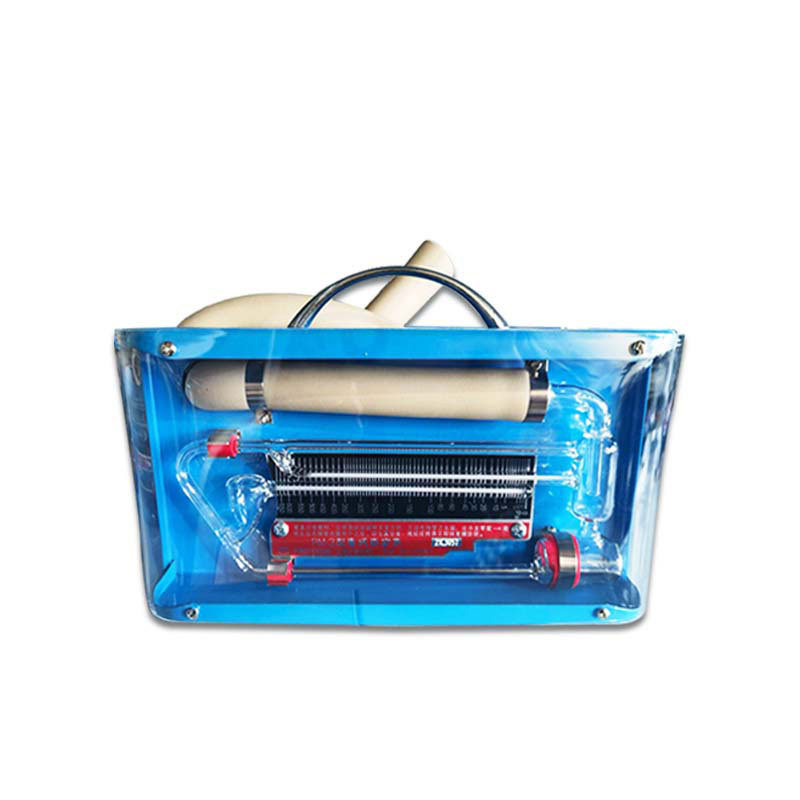Meteorological environment monitoring equipment supplier
Insist on doing high-precision customer favorite technology products

1. McLeod vacuum gauge product introduction
McLeod vacuum gauge can adapt to the relatively harsh measurement environment, such as temperature, humidity, vapor and chemical gases in chemical industry and medicine.McLeod vacuum gauge, also known as McLeod vacuum gauge, fluid vacuum gauge, and rotary compression vacuum gauge, measures the degree of vacuum based on Boyle-Mariot's law of ideal isothermal compression, so the measured value has "absolute" meaning. .
2. McLeod vacuum gauge product uses
1.McLeod vacuum gauge is mainly used for measuring low vacuum in vacuum industrial production. It is widely used in central air-conditioning, refrigeration units, metallurgy, metal magnesium smelting, petrochemical industry, vacuum furnaces, vacuum drying ovens, electron tubes, and high-voltage power equipment. , medicine, scientific experiments, educational research and metrology institutes, etc.
2. Because the McLeod vacuum gauge can directly calculate the pressure value through its own parameters, in addition to measuring pressure, it can also be used as an "absolute vacuum gauge" to verify some relative vacuum gauges, such as resistance vacuum gauges and thermocouples. Vacuum gauges and membrane vacuum gauges, etc.
3. McLeod vacuum gauge technical parameters
| Specifications and models | Measuring range | Accuracy | Implement standards or procedures | Overall dimensions |
| PM-2 | 0.1-650Pa-20KPa | Soil 20% | ZBY353-85Q/SSUPC01-2001 | 280x95x135mm (length x width x height) |
| PM-3 | 0.1-650Pa | Soil 20% | ||
| PM-4 | 0.1-650Pa | Soil 30% | 280x100x210mm(lengthxwidthxheight) | |
| PM-3J | 0.1-1200Pa | ±8% | ||
| PM-4J | 0.1-1200Pa | Soil 10% |
4. McLeod vacuum gauge working environment conditions
Temperature -5~38℃, relative humidity ≤85%
5. McLeod vacuum gauge installation and use instructions
1. Before installation: Take out the McLeod vacuum gauge from the package. First, carefully observe the glass tube part of the instrument. Under the premise of making sure that it is not broken, cut off the nylon tie near the end of the vacuum hose near the instrument, and then lift the vacuum tube vertically. Lift it up straight to make the working medium (Hg) in the tube flow back into the glass tube.
2. Installation: Remove the nylon tie at the rubber plug end of the vacuum hose, take out the rubber plug, apply vacuum grease on the inner opening and connect it to the vacuum equipment under test. The connection must be welded with a vacuum valve to control the opening and closing of the pipeline. If necessary, you can put a tightening ring on the interface and tighten the clamp to prevent air leakage.
3. Reading: Keep the instrument in a horizontal state (handle upward) and run the vacuum equipment for 1-3 minutes, then slowly open the vacuum valve and the instrument enters the measurement state, and lasts for 3-5 minutes in the measurement state (the size of the vacuum pump varies, and the duration varies. (length, judge based on experience during operation), read the meter vertically, please refer to the printed instructions on the meter plate for specific operations.
4. End of measurement: The instrument should be returned to the horizontal state (handle upward) first, so that all the measurement medium returns to the lower end of the glass tube, and then the vacuum valve should be closed. If necessary, use a clamp to clamp the vacuum rubber tube to isolate it from the vacuum system. This can ensure that the mercury in the vacuum meter is clean, and can also prevent the vacuum meter from being shattered due to the strong impact of the atmosphere when the vacuum meter is removed and separated. After removing the vacuum gauge, be sure to close the valves of the mechanical pump and the vacuum system after the mechanical vacuum pump stops, and put the mechanical pump into the atmosphere to prevent mechanical oil from returning to the vacuum system and the vacuum gauge from being contaminated by oil.
6. McLeod vacuum gauge maintenance and maintenance
1. When transporting or using the Maximeter, be careful not to lay it upside down to prevent the water-resistant silver from flowing back into the vacuum core tube or the mercury beads entering the middle closed-tube capillary and clogging the capillary, affecting the measurement accuracy. Therefore, the vacuum meter must be removed before each use. The tube is held vertically upward so that the mercury can flow back into the vacuum gauge glass tube.
2. The vacuum gauge should be in an upright state during measurement. It is strictly forbidden to put any gas into the direct air system strongly to avoid impacting the mercury in the glass tube and causing the glass tube to be broken.
3. If the McLeod vacuum gauge is accidentally transported or used, the mercury beads enter the middle glass capillary (measurement closed tube) and get stuck. At this time, a mechanical vacuum pump can be used to evacuate the McLeod vacuum gauge separately, and the vacuum gauge should be rotated back and forth. Swinging can cause the mercury stuck in the glass tube to flow back into the mercury container.
4. The working medium (Hg) of the vacuum meter, mercury, has been specially treated and has high purity. Mercury oxidation pollution caused by long-term use will directly affect the measurement accuracy. It should be returned to the factory for repair and calibration in time, and it can only be used after it is qualified.